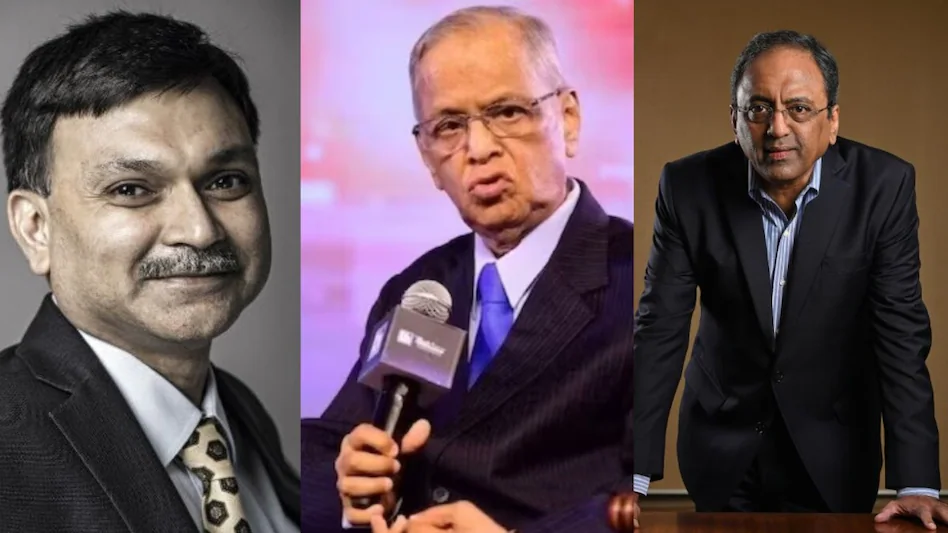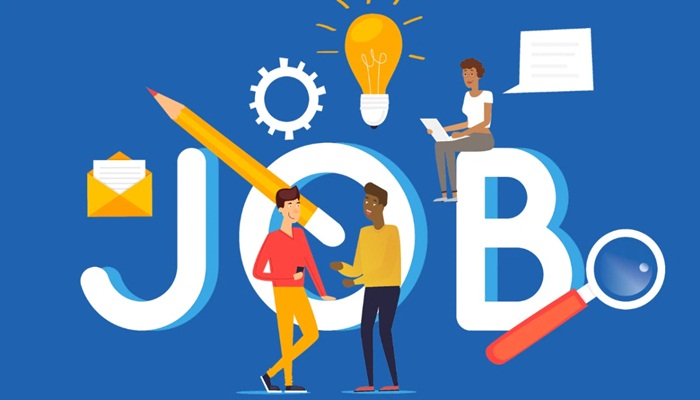As the Trump administration dismantles DEI policies in the U.S., the ripple effects are bound to be felt across global advertising networks—including in India. While some multinational agencies are slowing down their DEI efforts, it remains to be seen whether Indian ad agencies defy global headwinds and continue championing diversity, or are forced to toe the line. Experts, however, remain optimistic.
It has only been a few months since U.S. President Donald Trump returned to The White House to serve a second term, and we have seen Trump being the most Trump. Among his most significant decisions has been the dismantling of Diversity, Equity, and Inclusion (DEI) initiatives across American institutions. His administration frames DEI as a challenge to meritocracy, prompting U.S.-based corporations to scale back diversity programs to stay in line with federal expectations.
The implications of this policy reversal are now being felt beyond U.S. shores. Indian advertising agencies, many of which operate under the umbrella of global conglomerates such as WPP, Omnicom, and Interpublic Group (IPG), now find themselves at an inflection point. Will they remain steadfast in their commitment to inclusivity, or will they yield to the shifting priorities of their parent companies?
While some multinationals have hit the brakes on DEI, waiting for clearer direction from the top, Indian agencies appear to be sticking to their guns. The SEBI-mandated Business Responsibility and Sustainability Report (BRSR) ensures that the 1,000 publicly listed companies in India maintain accountability on DEI-related disclosures. This means that while American policy shifts may cast a long shadow, the Indian advertising industry isn’t entirely in the dark.
Will India buck the trend?
Roopa Badrinath, Founder and Principal Consultant at Turmeric Consulting highlights that while U.S.-based agencies in India are treading cautiously, there’s no widespread rollback just yet. “Some U.S. multinational advertising agencies with operations in India are going a little slow on their DEI initiatives in the short run in response to changes in U.S. policies,” she says. However, she notes that DEI strategies for India have always been adapted to fit the Indian cultural context rather than blindly mirroring Western approaches.
Badrinath refers to a recent study by the Avtar Group (Feb 2025) which backs this up:
- 28% of U.S.-based MNCs in India have put DEI programs on hold
- Another 28% are pausing to await further direction
- 44% will continue as is, while 33% will modify their approach—often repackaging DEI efforts under CSR mandates
This sentiment is echoed by Nivedita Sarbadhikari, Landor’s Global People Lead, DEI & People Director, India & Singapore. She points out that Indian agencies are less likely to abandon DEI because they recognise the commercial benefits of diverse creative teams. “With the multigenerational workforce we have in India, employees will expect their companies to be vocal about workplace equity and inclusion,” she says.
Vanaja Pillai, President of 22feet Tribal Worldwide & Head of DEI at DDB Mudra Group, echoes: “Globally, we’ve been encouraged to stay focused on our DEI goals. Programs like the Phyllis Asia project, which strengthens women’s leadership, have improved gender ratios by 10% since 2020. Clients are invested in diverse storytelling, and while we have a long way to go, the intent is strong.”
Yet, the danger of a slow, passive dilution of DEI initiatives remains. As Shweta Sampat, Founder & Principal Consultant of Tribe Consulting, puts it: “The U.S. DEI rollback is like ditching colour in advertising—a bland, shortsighted approach bound to alienate audiences. If holding companies deprioritise DEI, there’s a risk that local leadership might follow suit, either out of alignment or convenience.”
Expressing his concerns, Parmesh Shahani, Head of Godrej DEI Lab, Godrej Industries Group, says, “This is a challenging time for our LGBTQIA friends in the US – not just in advertising agencies there, but everywhere. We have often learnt from each other over the years to advance LGBTQIA rights across the world. It is time for us to show solidarity towards them. Besides agencies, what I am particularly concerned about are the Indian NGOs that focus on LGBTQIA health and outreach and the impact on these.”
The gender gap in creative leadership
One of the more alarming trends in the global advertising industry has been the declining representation of women in creative leadership. In the U.S., the rollback of DEI initiatives could exacerbate this issue. But in India, the story isn’t quite as bleak.
Garima Pant, Group CHRO at MullenLowe Lintas Group, argues that Indian corporate policies have historically been ahead of the U.S. when it comes to gender equity. “We introduced maternity leave, daycare support, and maternity cover long before the U.S. did,” she notes. While DEI initiatives help, she believes that in India, female leadership has largely been driven by merit rather than quotas.
Sarbadhikari adds another perspective: “Advertising has historically been a boys’ club at the top. But in India, we have bucked the trend.” She cites Landor’s own gender ratio—60:40 women to men, with leadership representation at 75% women—as evidence that Indian agencies are serious about gender equity.
Of course, the concern remains: If American agencies deprioritise DEI, will Indian agencies feel less pressure to push for gender balance at leadership levels?
The business case for DEI (if morality & common sense aren’t enough)
The moral case for diversity is clear, but in an industry driven by market performance, what happens when DEI is viewed as a liability rather than an asset?
Badrinath firmly believes that DEI is a non-negotiable business strategy. “Organisations embracing diversity and inclusion outperform their peers in profitability, innovation, and customer satisfaction,” she says. In India, where women make up a huge portion of the consumer base, failing to have diverse creative teams could mean missing out on lucrative opportunities.
“The real challenge is overcoming our biases, like the outdated idea that leaders should look a certain way—often based on the fact that we’ve mostly seen men in those roles,” emphasises Pant.
Sampat doesn’t mince words: “If U.S. agencies hit reverse, India has a chance to hit fast-forward.” She warns that agencies that pull back on DEI risk creative stagnation and losing touch with their evolving audiences. She adds, “India’s diversity isn’t up for debate. It is the default construct of our audience. Brands that keep up will lead. Those that don’t… well, creative irrelevance can be a fast downward spiral.”
Sarbadhikari highlights the reinforcement of this point by recent campaigns that have leveraged DEI as a core strength. The Britannia Marie Gold special edition biscuit celebrating Paralympian Avani Lekhara, the Vicks “Touch of Care” campaign featuring trans activist Gauri Sawant, and the Ariel “Share the Load” campaign challenging gender roles—all are prime examples of how inclusive storytelling can drive brand success.
Are clients receptive?
While some clients remain hesitant to explicitly align themselves with DEI messaging, others recognise that modern consumers—especially millennials and Gen Z—demand inclusivity.
Sarbadhikari shares, “While the average Indian client’s receptiveness to DEI campaigns has evolved over the years, it has not been an easy journey, and it is not everyone’s cup of tea.”
“The Tanishq interfaith wedding ad is a perfect example. It sparked bold conversations but also faced backlash. Clients today are stuck in a tug-of-war—wanting to push boundaries but also fearing repercussions,” she adds, elaborating, “Many clients in India today are ready for bold, inclusive storytelling, but many are still testing the waters, balancing progressive messaging with the fear of backlash. Corporates may want to proceed with caution whereas inclusivity may be non-negotiable for consumers.”
Pant adds that DEI is ingrained in India’s social DNA. “Unity in Diversity is a mandatory essay topic in every Indian school. If you grew up here, you’ve probably written about it multiple times,” she jokes. Despite this cultural norm, she acknowledges that some topics—such as caste discrimination—remain largely untouched in corporate DEI efforts due to their deeply rooted nature.
“Clients want to grow their business. And if that means that their brand needs to have a POV which is reflective of the consumer sentiments, they will continue to do it. We need to also remember that it is not just brands that have a sense of purpose; the people who are the custodians of brands have their own sense of purpose, which will drive the work that can shift consumer behaviour through impactful communication,” remarks Badrinath.
Sarbadhikari also adds that creative agencies can help bridge this gap by educating clients and giving them confidence while crafting campaigns that resonate with their business proposition and corporate authenticity. “They have the power to nudge hesitant clients toward embracing DEI without compromising their comfort zone and keep the ideas flowing,” she notes.
Harish Iyer, Senior Vice President and Head – DE&I at Axis Bank, remarks, “Respect for diversity is an integral part of the Indian ethos. Indian companies that have embarked on this journey remain committed to fostering diversity, equity, and inclusion. For us, inclusion transcends compliance; it’s a core business strategy that fuels innovation and growth. Diversity is India’s strength, and we’re proud to champion it every day at Axis Group.”
LGBTQIA+ inclusion: A separate path for India?
Shahani notes that while LGBTQIA+ rights in the U.S. may face challenges under the Trump administration, India has been carving its own path. He sees Indian companies continuing to advance DEI efforts, independent of global headwinds. “Our inclusion is swadeshi,” he says, emphasising that LGBTQIA+ workplace rights in India have been built on Indian values, not just Western influence.
Pointing at a potential silver lining, he remarks, “I think companies with good intentions have always been able to offer a measure of safety and security to queer employees, just like my own company Godrej had been doing since well before the Supreme Court decriminalisation in 2018. Over the past few years, like us, we have seen more and more companies in India recognise same-sex partners for medical benefits, provide gender affirmation surgery or create safety mechanisms to protect queer employees from harassment, or provide infrastructure like all-gender washrooms.”
Shahani believes that Indian corporations will continue to push forward in this space, with or without international support.
While we are quick to restrict and look at inclusivity from a clouded, narrow lens, there are issues deeply embedded in the psyche of India that—albiet its rich and diverse and inclusive history—are often overlooked as though they are naturally occurring.
Pant highlights, “While gender and disability inclusion are addressed, sensitive issues like caste discrimination and unequal wages for labour remain largely untouched due to their deep-rooted nature in Indian society. Corporate attitudes align with consumer expectations for diversity and inclusion, but addressing more sensitive topics will require careful consideration.”
While Trump’s rollback of DEI policies has triggered uncertainty in the U.S., India’s advertising industry appears to be holding steady. The market-driven need for diverse creative perspectives, SEBI’s DEI-linked corporate mandates, and evolving consumer expectations provide strong incentives for agencies to stay the course.
However, the danger lies in complacency. If global holding companies begin to deprioritize DEI, there’s a real risk that Indian agencies could lose momentum. The challenge now is for agencies to proactively reinforce DEI—not as a token initiative, but as a fundamental business strategy.
As Iyer puts it, “Inclusion isn’t just compliance; it’s a core business strategy that fuels innovation and growth.”
For Indian advertising agencies, the message is clear: If the U.S. is stepping back, India has the opportunity to step forward.
Source:
https://www.socialsamosa.com/experts-speak/us-dei-rollback-effect-indian-agencies-8877410






















